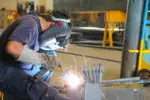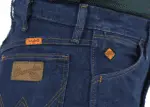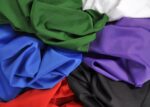Welding blankets are useful especially if you are not sure about the extent to which your welding gun can spatter. If the molten metal touches your skin anywhere in your body, the effects can be severe and you can be in pain.
Welding blankets can also protect the areas where you weld. You can lay them under the machine while you work or use them as a curtain dividing the work area from the rest of the room.
Silicon dioxide is a coating material used for welding blankets made of fiberglass. The shield created by silica or silicon dioxide prevents the shedding of fiberglass preventing irritation to the skin of the welder. Apart from this, there are many other features of silica that enhance the quality of the welding blanket.
Why is silicon dioxide used in welding blankets?
Silicon dioxide is an element that is considered to be the 2nd most abundant element on Earth. The strong structured element is used for different purposes that carry significance in many industries.
Silicon is used to make cylinder heads, machine tools, deoxidize steel, and many other things that are important in different spheres.
Welding blankets are just one among many uses of this abundant element. The quality of heat resistance that the element adds to the fabric makes them a good choice for making welding blankets.
Why silicon dioxide is highly heat resistant?
The strong structure is what makes the element heat resistant. Its covalent structure is difficult to break rendering it with a high melting point.
The energy required to break the bond of its basic elements gives it the power to withstand the effect of heat. The average melting point of the element is around 1700 degrees Fahrenheit which is pretty high.
Apart from a high melting point silicon dioxide also has a high boiling point. All of which makes it excellent for a heat-intensive activity like welding.
How is silicon added to welding blankets?
Welding blankets come in various types. It is made from different materials depending on what it is made for.
The most common material used to make is fiberglass. Welding blankets made of fiberglass are therefore easily available in the market. Due to its high melting point, it is considered to be the best choice of all to make welding blankets.
However, fiberglass has a con that makes it quite uncomfortable for users. It tends to lose into break into minute pieces shedding them with time.
These can create irritation if they come in contact with your skin. Hence, a coating is essential for welding blankets made of fiberglass. This is where silicon dioxide comes into play.
Silicon dioxide is applied over fiberglass to prevent shedding. This coating keeps the material intact.
See also: Can a Welding Blanket Be Washed?
Is silicon dioxide the same as silica?
Yes, silicon dioxide is another name for silica. And this is why you can find ‘silica-coated welding blankets’ written on online sites or boards in the market. The word silica is used since it is easier to say and convenient to market in the name.
What are the other advantages that silicon dioxide adds to welding blankets?
Adding silica to the material adds certain features that help in the maintenance of the material such as:
1.) Gives the fabric flexibility
2.) High heat resistance to even molten metals, spatter, and welding slags
3.) Gives ideal support for cutting operations
4.) Keeps the welding area protected from abrasion
5.) Prevent fire accidents due to its low thermal conductivity and low heat capacity
6.) Ensures safety even in high temperature working conditions
7.) All of this makes these welding blankets ideal for heavy-duty works.
What are the other materials used for coating welding blankets?
Apart from silicon dioxide, there are many other materials that serve the same purpose. They are:
-
-
- Graphite
- Aluminum
- Ceramic
- Neoprene
- Acrylic
- Vermiculite
-
The best silica-coated welding blankets
1.) OASD 8X8FT 950GSM Heavy Duty Welding Blanket Welding Fireproof Retardant Blanket
- High Silica Fabric Welding Blanket
- Easy Hanging& Horizontal Welding
- Repeatable & Durability
- Easy Storage
- Safety & Wide Application
Prices pulled from the Amazon Product Advertising API on:
Product prices and availability are accurate as of the date/time indicated and are subject to change. Any price and availability information displayed on [relevant Amazon Site(s), as applicable] at the time of purchase will apply to the purchase of this product.
Excellent for heavy-duty works, these 8X8 feet welding blanket is ideal for horizontal and vertical use. It is flexible and pliable making it convenient for taking it with you to places.
Crafted to deal with any intensive working atmosphere, this welding blanket is quite popular in the market.
2.) FLASLD Silicone Coated Welding Blanket 4×6 ft Welding Curtain Welding Shield
- No damage to skin and lungs
- Higher temperature resistance
- Multifunction
- Exquisite workmanship
Prices pulled from the Amazon Product Advertising API on:
Product prices and availability are accurate as of the date/time indicated and are subject to change. Any price and availability information displayed on [relevant Amazon Site(s), as applicable] at the time of purchase will apply to the purchase of this product.
Made from alkali-free glass fiber, this welding blanket has high silicon content making it super effective. Stitched to perfection, this welding blanket is made to give the user a feel at ease. Shedding of glass pieces is not a problem with this blanket.
3.) JJ CARE Heavy Duty Welding Blanket 4×6 ft Fiberglass Welding Curtain
- RAISE WORK SAFETY
- BUILT TOUGH
- SECURED AND EASY HANGING
- SAFE HEAT SHIELD
- EFFICIENT & ECONOMICAL SOLUTION
Prices pulled from the Amazon Product Advertising API on:
Product prices and availability are accurate as of the date/time indicated and are subject to change. Any price and availability information displayed on [relevant Amazon Site(s), as applicable] at the time of purchase will apply to the purchase of this product.
Made from quality fiberglass that is tear resistant and highly heat resistant, you can use the product for a wide range of welding applications. Even though the material is thinner compared to others available in the market, it serves the purpose perfectly.
4.) Black Stallion B-SLC18 6’X8′ 18 oz. Tan Silica Welding Blanket
- Tan 18 oz. silica
- 3,000 F melting temperature
- .030 thick
- Finished blankets include grommets at every 36 on all sides
- For HEAVY DUTY applications: heavy sparks, spatter, slag and molten metal
Prices pulled from the Amazon Product Advertising API on:
Product prices and availability are accurate as of the date/time indicated and are subject to change. Any price and availability information displayed on [relevant Amazon Site(s), as applicable] at the time of purchase will apply to the purchase of this product.
Designed with attractive color and developed to use for a variety of welding applications, this welding blanket can help you finish your task without much trouble. It can withstand up to a temperature of 3000 degrees Fahrenheit.
5.) Tillman 594B 6’X8′ 18 oz. Bronze Silica Welding Blanket
- Material: Bronze
- Item Dimensions LxWxH 13 x 13 x 3 inches
- Welding blanket usage guidelines: Sparks, spatter, abrasion
Prices pulled from the Amazon Product Advertising API on:
Product prices and availability are accurate as of the date/time indicated and are subject to change. Any price and availability information displayed on [relevant Amazon Site(s), as applicable] at the time of purchase will apply to the purchase of this product.
Not much reviewed like the above-mentioned ones, the product comes in an attractive shade and is made with silica coating and crafted to perfection. Large enough to cover a significant area, this blanket will help to finish the task fastly.
Conclusion
Silica or silicon dioxide is a very popular coating material used for welding blankets due to its qualities. They are available in various sizes and thicknesses. Remember to choose the best one for you based on your welding needs.
Come visit my other blogs for more information!



![JJ CARE Heavy Duty Welding Blanket 4×6 ft Fiberglass Welding Curtain [850GSM Thick] Weld Blanket 24Sq Ft](https://m.media-amazon.com/images/I/51Z9z2Np2sL._SL500_.jpg)







